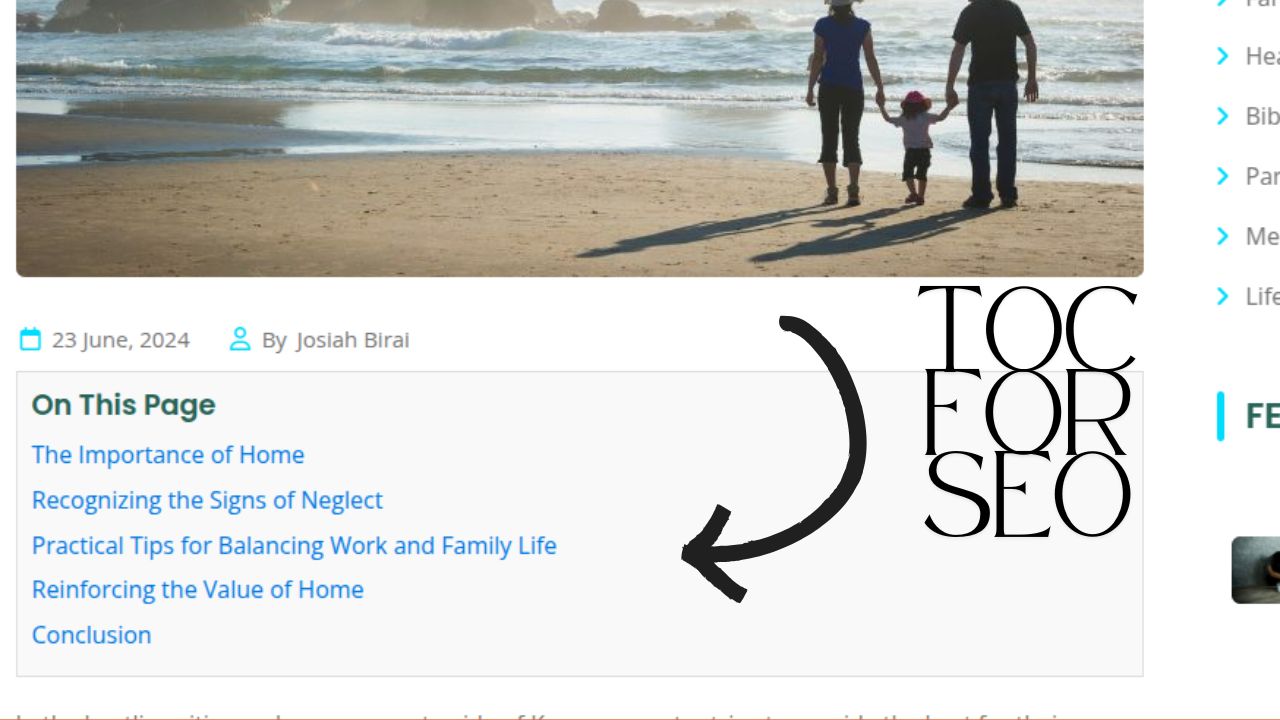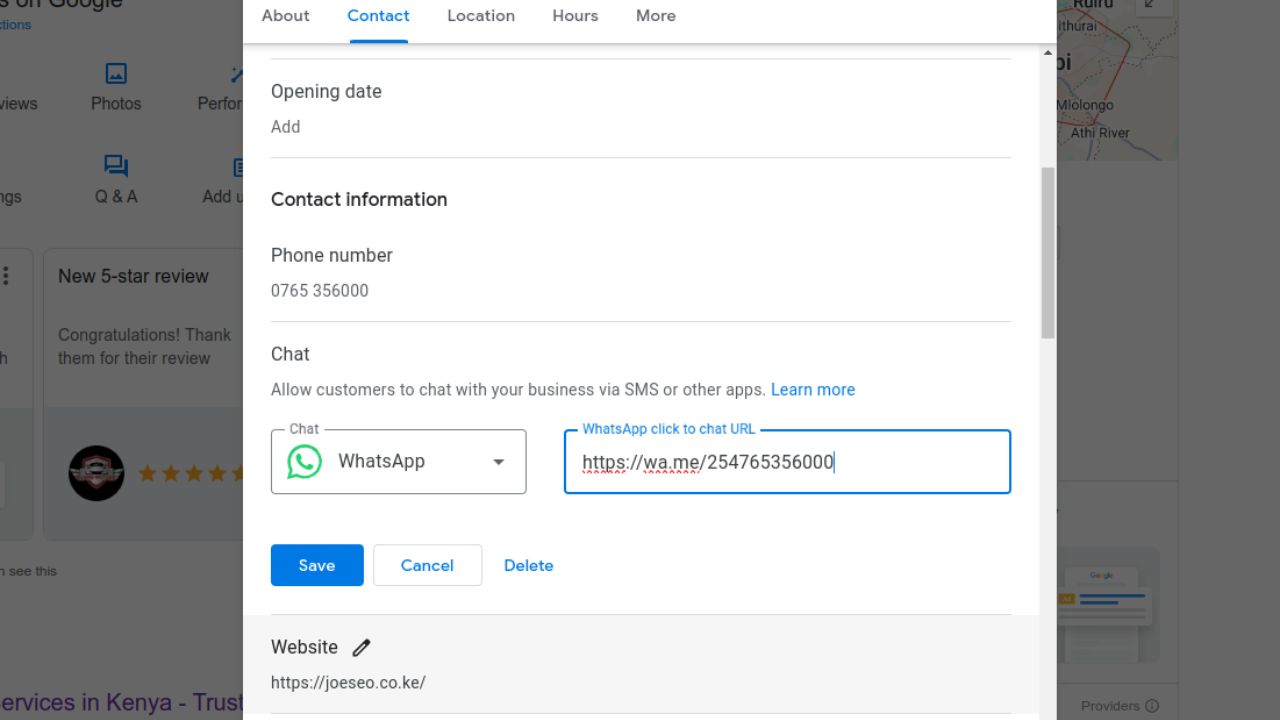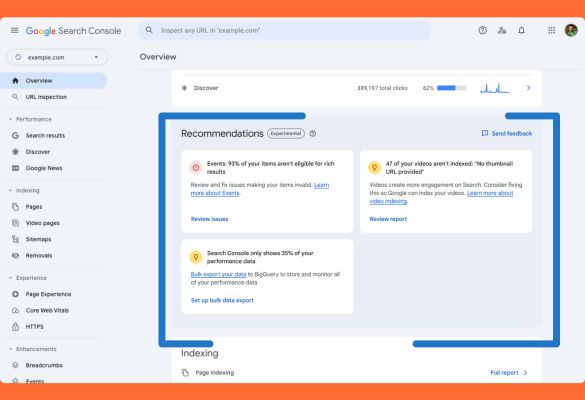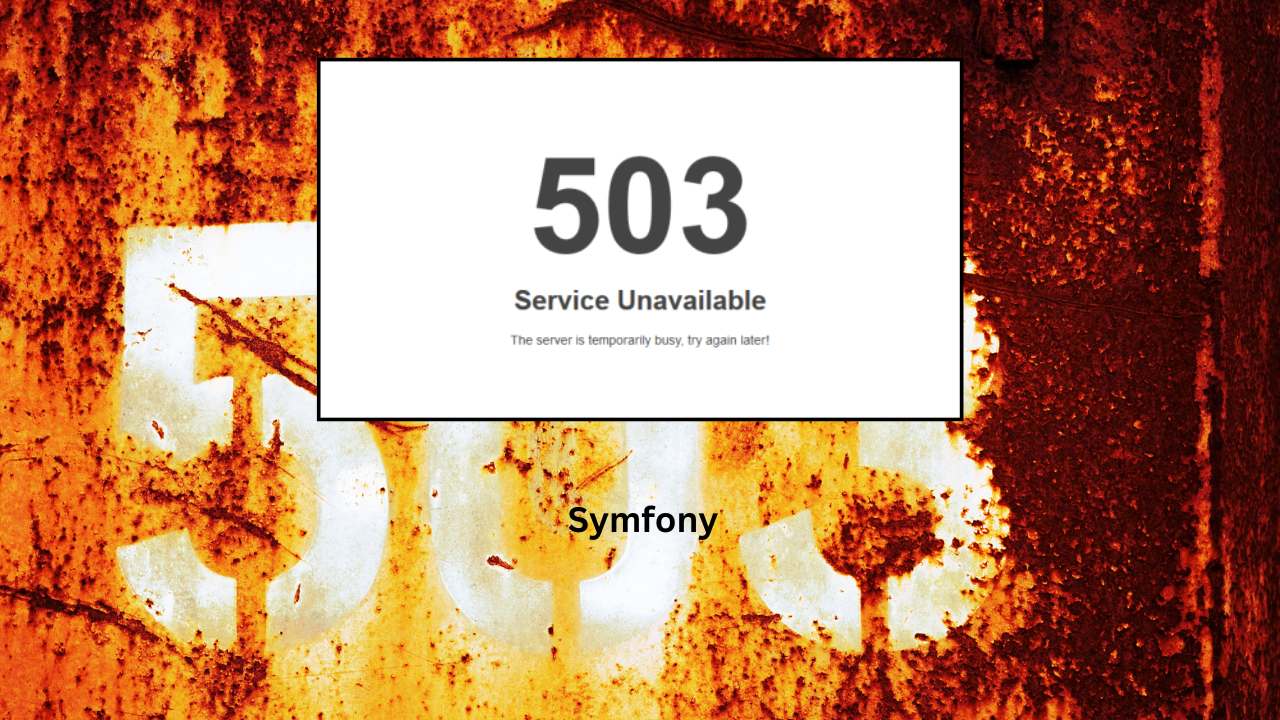What is the meaning of Service In Locations (SILs) in SEO
In SEO, Service In Locations (SILs) refers to the practice of creating web pages that target specific services offered in different geographic locations. These pages are designed to rank well in search engines for queries related to both the service and the location.
For example, if a business provides plumbing services, SIL pages might be created for different cities or regions, such as “Plumbing Services in Nairobi,” “Plumbing Services in Westlands,” etc. The idea is to capture local search traffic from people looking for that service in their specific area.
Here are the critical components of Service In Location (SIL) pages in SEO:
- Targeted Keywords: SIL pages focus on localized keywords that combine the service and location, such as “car repair in Nairobi” or “web design services in Kenya.”
- Unique Content for Each Location: While many SIL pages are similar, it’s essential to have unique content for each location, including details relevant to that area, to avoid duplicate content issues.
- Local SEO Optimization: These pages should be optimized for local search, meaning they often include:
- Location-specific metadata (titles, meta descriptions, headers)
- NAP (Name, Address, Phone Number) consistency with local business listings (such as Google My Business)
- Localized images or reviews/testimonials relevant to that location.
- Structured Data: The use of LocalBusiness schema markup helps search engines understand the page’s service and location relevance.
- Internal Linking: Creating a solid internal linking structure between your SIL pages is essential to passing authority and making navigation more accessible for users. For example, a page for Voice Lessons in Nairobi should link to Voice Lessons Westlands, Voice Lessons Tatu City, etc.
By implementing SIL pages, businesses can capture traffic for a wide range of service-related searches across multiple locations, which can drive local conversions and improve their SEO presence.
As an example, how do I apply that to www.gybird.co.ke, which sells cars in Nairobi?
For Gybird Motors’ website, which sells cars in Nairobi, you can apply Service In Locations (SILs) by creating pages that target specific car-related services or inventory for different neighborhoods or regions within Nairobi or even surrounding areas if you plan to expand. Here’s how you can do it:
Identify Location-Based Search Terms
Focus on keywords that combine your car sales service with specific locations. For example:
- “Buy Cars in Nairobi”
- “Affordable Cars in Westlands”
- “Used Cars in Karen”
- “New Cars in Eastleigh”
- “Best Car Deals in Runda”
Create Location-Specific Pages
Build pages dedicated to each of these neighborhoods or areas. For example:
- /nairobi/cars-in-westlands
- /nairobi/cars-in-karen
- /nairobi/cars-in-eastleigh
Take note of the “/nairobi/” part of the URL. “/nairobi” is the main page which has the above sub-pages.
Each page should focus on providing information specific to that location, such as:
- Inventory available in that area
- Testimonials or reviews from customers in that region
- Local imagery (e.g., landmarks)
- Details about any special offers or delivery options for that area
Optimize for Local SEO
- Meta Tags: Ensure each page has location-specific meta titles and descriptions. For example:
- Title: “Affordable Cars for Sale in Westlands, Nairobi | Gybird Motors”
- Meta Description: “Find the best deals on new and used cars in Westlands, Nairobi. Gybird Motors offers a wide range of cars for sale in Nairobi’s top neighborhoods.”
- Headers: Use H1 and H2 tags that incorporate the location and service, e.g., “Cars for Sale in Karen” or “Affordable Used Cars in Eastleigh.”
NAP Consistency
Ensure the company’s Name, Address, and Phone Number (NAP) are consistent across the website, especially on your SIL pages. You can include details about your physical presence or delivery options in those areas.
Include Structured Data (Schema Markup)
Use the LocalBusiness schema to markup details about your business, including your location and services. Schema markup will help search engines better understand your pages and potentially improve your ranking in local search results.
Localized Content
Each SIL page should include unique content that speaks to the specific needs or preferences of customers in that area. For example:
- Highlight car models that are popular in certain areas (SUVs for upmarket areas, compact cars for urban areas)
- Mention delivery or pickup services available in those neighborhoods.
Google My Business Listings
Although Nairobi is a large city, having a well-optimized Google My Business listing is essential. To boost local search visibility, include links from your location-specific pages to your GMB profile.
How to link to GMB from your location-specific pages:
Embed GMB in the Contact Information Section
- Add a “Contact Us” or “Visit Us” section on each location-specific page where you list your address, phone number, and business hours. Include a sentence like: “Find us on Google My Business.”
Add a Google Maps Widget
- Include an embedded Google Maps widget showing your business location. Below the map, provide a link saying, “View on Google Maps and our Google My Business profile.”
Call-to-Action for Reviews
- Encourage reviews directly on the page: “If you’ve worked with us in [Westlands], please leave a review on Google My Business.”
Dedicated “Find Us on Google” Section
- Create a section with a clear call-to-action like: “For more details about our services in [Nairobi], visit our Google My Business profile.”
Add a “Trusted by Local Clients” Section
- In testimonials or a trust section, mention: “Check out reviews from satisfied clients on our Google My Business page.”
Footer Link
- Include a simple footer link on each page: “Find us on Google My Business.”
Internal Linking
Link your SIL pages from relevant places on your website. For instance, on your homepage, you could have a section like “Cars for Sale Across Nairobi” with links to each location page.
By implementing these strategies, you’ll increase your chances of appearing in search results when potential customers in Nairobi or its neighborhoods are searching for cars. This will lead to more traffic and inquiries for Gybird Motors.
Does this mean I should have showrooms in all the areas for which I create pages?
No, you don’t need physical showrooms in all the areas for which you create pages. Service In Locations (SILs) aims to target local search traffic by optimizing for geographic areas where potential customers may be searching for cars, even if you only have one central location.
You can still create these pages by focusing on delivery services, availability of specific cars, or personalized experiences in those areas.
Here’s how you can approach this without needing multiple showrooms:
Delivery or Pickup Options
Highlight that you offer delivery services or pickup arrangements to different neighborhoods in Nairobi. You can emphasize that Gybird Motors, for example, can easily bring the car to the customer or arrange test drives in convenient locations.
For example:
- “We deliver cars to Westlands, Karen, and other neighborhoods in Nairobi.”
- “Schedule a test drive in any Nairobi neighborhood!”
Featured Inventory by Area
Even with one central location, you can tailor the car listings on each SIL page to reflect the preferences or trends in different neighborhoods. For example, if you know that SUVs are popular in Karen but smaller cars are in high demand in Nairobi CBD, feature those types of cars on the respective pages.
Customer Testimonials or Success Stories
Use customer reviews or testimonials from people in those specific areas. Even if they visited your main showroom, mentioning their neighborhood on the page gives it a local feel and builds trust with other potential buyers in that area.
For example, on a page for Westlands, you could include:
- “John from Westlands found his perfect car at Gybird Motors and had it delivered within 24 hours!”
Service and Support Specific to Locations
You can emphasize that you offer after-sales services(such as maintenance or support) and that your support team can serve customers across the city, not just near your physical showroom.
Targeted Offers or Promotions
Create promotions or special offers targeting specific neighborhoods:
- “Special offer on cars for residents of Nairobi CBD!”
- “Free delivery for customers in Karen!”
Google Maps and Local Landmarks
Use Google Maps or other local references on your location pages to make it easy for customers to understand where you’re located and how convenient it is to access your services.
By using these techniques, you can give the impression of a strong local presence in multiple areas without needing physical showrooms, while still attracting local customers.
Should I use SILs even if there is no traffic for such keywords?
For example, ‘Voice lesson in Westlands’, when Google keyword planner doesn’t show any traffic for that keyword.
If Google Keyword Planner (or another keyword tool) shows little or no traffic for specific keywords like “Voice lesson in Westlands,” it’s essential to weigh the decision carefully before creating Service In Locations (SILs). Here are some factors to consider:
Evaluate Potential Demand
Just because a keyword has low search volume doesn’t mean there is no demand. Some niche or location-specific queries might not have a lot of search traffic, but those that do search for them are often highly targeted and likely to convert. If you believe that people in Westlands are looking for voice lessons, it may still be worth creating the page to capture that localized, high-intent audience.
Broader Keyword Targeting
If there’s no direct traffic for “Voice lessons in Westlands,” you can still target broader keywords like “Voice lessons in Nairobi” and optimize sub-pages for Westlands, Karen, etc.
This approach can help you capture general traffic, while also positioning you to rank well if local search demand increases in the future.
For example, the Westlands page could still target:
- “Voice lessons in Nairobi”
- “Music lessons in Westlands”
- “Private voice coaching near me”
This allows you to reach broader audiences while maintaining localized relevance.
Assess Competition
If there’s no competition for the keyword, it could be an opportunity to dominate the search results for that location. Even if search volume is low, being the only business optimized for that search can lead to conversions when people do search for it. Google’s local intent algorithm often rewards pages with specific local relevance even if the overall search volume isn’t high.
Consider Alternative Approaches
If keyword research shows little to no traffic, you might want to consider whether other types of content might be more effective, such as:
- Blog Posts: Write blog content about voice lessons in various neighborhoods, which could attract local traffic over time, even for long-tail or obscure searches.
- Google My Business (GMB): Ensure that your GMB profile is optimized for areas like Westlands. People searching for services may do so via Google Maps or GMB rather than typing exact keywords into the search engine.
- Social Media and Local Ads: Focus on running social ads or Google Ads targeting specific neighborhoods. This is an efficient way to drive traffic if organic searches are low.
Test Before Expanding
Consider starting small by creating a few key SIL pages based on the most promising locations or services. Track their performance using tools like Google Analytics or Search Console. If you see even moderate success, you can expand the strategy to more areas.
Use SILs for Future-Proofing
Sometimes SIL pages can also serve as a future-proofing strategy. Even if there’s no search volume now, neighborhood growth or changes in local preferences might lead to more demand over time. Having the content ready can give you an advantage.
If the local demand is there, these efforts can still pay off even if Google doesn’t report it.
This strategy works especially well for Gybird Motors or similar businesses if you’re confident in the local market’s needs, even when search tools don’t yet show significant traffic.
You mentioned “private voice coaching near me”. how do I target the “near me” keywords?
Targeting “near me” keywords can be highly effective for local businesses like Gybird Motors because searchers using those terms are usually looking for immediate solutions in their local area, and they’re often ready to make a purchase. Here’s how you can optimize your website to capture this valuable traffic:
Optimize for Local SEO
Google prioritizes results based on proximity when users search for “near me” keywords. To appear for these queries, you need to show Google that your business is relevant for local searches. Here’s how to optimize for local SEO:
- Google My Business (GMB) Listing:
- Ensure your Google My Business profile is fully optimized. Include accurate business information, hours of operation, phone number, and photos.
- Use your main keyword in your GMB description (e.g., “Car dealership near me in Nairobi” or “Used cars near me”).
- Keep your NAP (Name, Address, Phone number) consistent across your website and all other online listings.
- Local Citations:
- Submit your business to local directories like Yelp, Yellow Pages, and niche-specific directories (such as car dealership directories). This helps build local authority.
- Ensure that your business name, address, and phone number are consistent across these listings.
- On-Site Local SEO:
- Include your location (e.g., “Nairobi”) alongside your main service keywords in key on-page elements:
- Title Tags: “Car Dealership Near Me | Gybird Motors in Nairobi”
- Meta Descriptions: Use phrases like “Looking for cars for sale near you in Nairobi? Visit Gybird Motors for the best deals.”
- H1 & H2 Tags: Use headers like “Find Cars for Sale Near You in Nairobi” on relevant pages.
- Include your location (e.g., “Nairobi”) alongside your main service keywords in key on-page elements:
Create Localized Content
Even though users are searching for “near me,” Google will often interpret this as a local search, so it’s important to create location-specific content:
- Location Pages: Create location-specific pages that include your neighborhood, region, or city. Use phrases like “buy cars near me” or “find a car dealer near me” in the content.
- Example: “Looking for a car dealership near Westlands? Gybird Motors offers a wide selection of new and used cars and fast delivery to Westlands.”
- Service Area Pages: If you serve multiple areas around Nairobi, create a page for each service area. These pages can include testimonials or case studies from clients in those areas, which helps build local relevance.
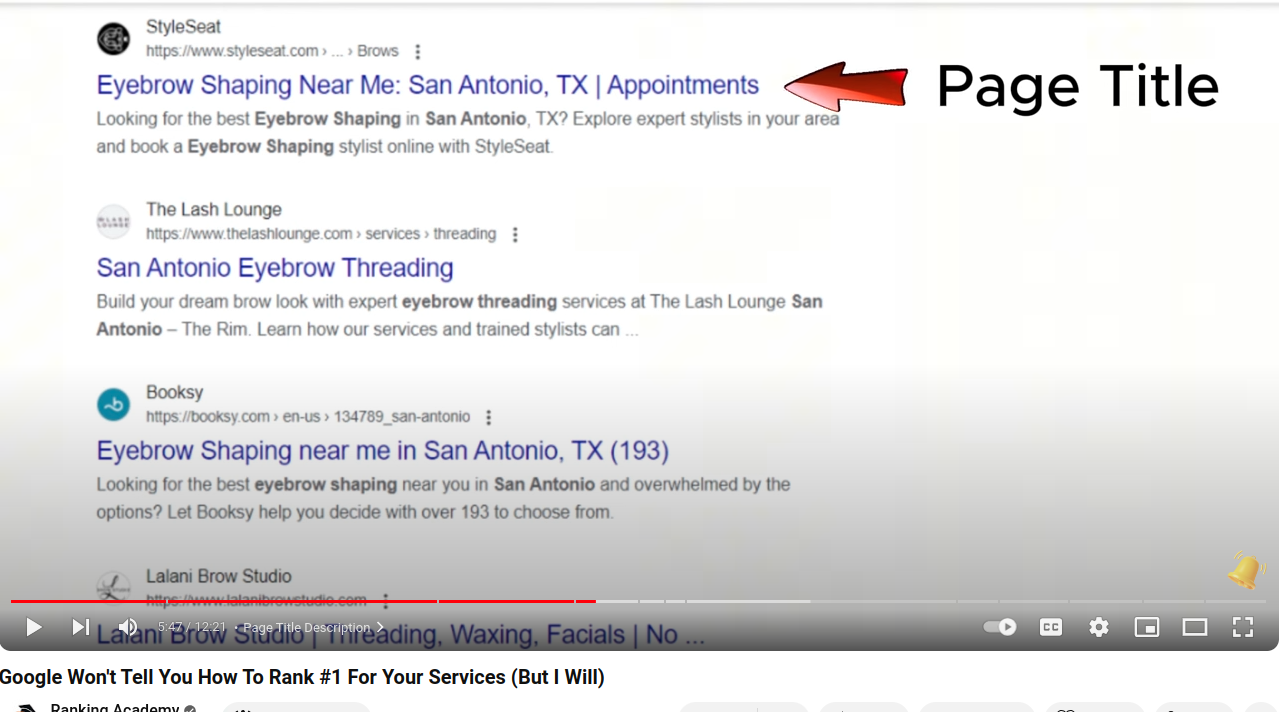
Mobile Optimization
Most “near me” searches are done on mobile devices, so it’s critical that your site is mobile-friendly:
- Ensure that your website is mobile-optimized with fast load times, easy navigation, and a clean layout.
- Implement click-to-call/click-to-chat buttons so that users can easily contact you directly from their mobile devices.
Use Structured Data (Schema Markup)
Implement LocalBusiness schema on your website. This structured data provides Google with key information about your business, such as location, hours of operation, and contact details, making it easier for your business to appear in local search results.
<script type="application/ld+json">
{
"@context": "https://schema.org",
"@type": "LocalBusiness",
“name”: “Gybird Motors”,
“image”: “https://gybird.co.ke/logo.png”,
“telephone”: “+254712345678”,
“address”: {
“@type”: “PostalAddress”,
“streetAddress”: “123 Westlands Road”,
“addressLocality”: “Nairobi”,
“addressRegion”: “Nairobi”,
"postalCode": "00100",
"addressCountry": "KE"
},
"url": "https://gybird.co.ke",
"priceRange": "$$"
}
</script>
This will help Google identify your location and show it in “near me” searches.
Encourage Reviews
Positive reviews on Google and other platforms help boost your rankings for “near me” searches. Encourage happy customers to leave reviews on Google and mention their location. For example:
- “Gybird Motors is the best car dealer near me in Nairobi. I got my car delivered to Westlands quickly!”
This improves your rankings and shows Google that you’re relevant to users searching for “near me.”
Local Backlinks
Get backlinks from local businesses, news sites, or bloggers. For example, suppose a local blog or newspaper features a story about your dealership. In that case, Google will see your business as a legitimate local authority, increasing your chances of appearing in “near me” searches.
Run Local Ads
- Google Ads: Create geo-targeted ads using “near me” phrases. For example, bid on keywords like “buy cars near me” or “used car dealership near me.”
- Facebook and Instagram Ads: Target users within a specific radius around your business location with ads emphasizing your service’s local nature (e.g., “Looking for cars near you? Visit Gybird Motors in Nairobi!”).
Local Social Media
On platforms like Instagram and Facebook, use geotags in your posts and stories to connect with local audiences. For instance, when posting about new cars in your inventory, geotag the post with “Nairobi” or a specific neighborhood like “Westlands.”
How will I apply the SILs to joeseo.co.ke my SEO company in nairobi?
To apply Service In Locations (SILs) to your SEO company, joeseo.co.ke, you can target specific geographic areas in Nairobi and surrounding regions to attract local businesses seeking SEO services. Here’s how you can approach it:
Identify Location-Based SEO Keywords
Find location-specific keywords related to SEO services. These could include:
- “SEO services in Nairobi”
- “SEO expert in Westlands”
- “SEO agency near Nairobi CBD”
- “Search engine optimization in Karen”
Use tools like Google Keyword Planner or SEMrush to find variations based on location.
Create Location-Specific Service Pages
For each neighborhood or area you want to target, create a dedicated page that offers SEO services specific to that location. These pages should emphasize how your services cater to businesses in that area.
Example page URLs:
- /seo-services-in-westlands
- /seo-company-in-karen
- /nairobi-cbd-seo-expert
Each page should:
- Include the location name in the URL, title tag, meta description, and H1/H2 tags.
- Feature content relevant to businesses in that area, such as local business challenges or industry trends specific to Nairobi neighborhoods.
- Highlight successful SEO projects for clients in those areas.
Example content for the Westlands page:
- “At Joe SEO, we help businesses in Westlands, Nairobi, improve their online visibility. Whether you’re a restaurant, a retail store, or an IT company, our SEO services are tailored to meet your local needs. We’ve helped numerous businesses in Westlands dominate search engine rankings and grow their customer base.”
Highlight Local Expertise
On your SIL pages, emphasize your understanding of the local market. Local businesses often prefer agencies that understand the area, customer behavior, and industry trends.
- Mention how your SEO strategies consider local competition, customer preferences, and search trends.
- Showcase case studies or testimonials from businesses in specific areas of Nairobi to build trust and demonstrate success.
Optimize for Local SEO
Ensure each page is optimized for local SEO:
- Include location-specific keywords throughout the page.
- Use NAP consistency (Name, Address, Phone Number) on your site, and ensure it matches your Google My Business (GMB) profile.
- Add Google Maps embeds for your business on each SIL page to show proximity to that neighborhood.
Example:
- “As a leading SEO company near Nairobi CBD, Joe SEO offers personalized search engine optimization solutions to drive local traffic and increase your online visibility.”
Leverage Google My Business (GMB)
- Make sure your GMB profile is optimized for Nairobi. Include photos, business hours, and keywords related to your services.
- Add links from your SIL pages to your GMB profile. This can help you rank in the Google Local Pack, especially for “near me” searches.
Include Local Case Studies and Testimonials
Use testimonials and case studies on each location-specific page from clients in those neighborhoods. This not only adds credibility but also strengthens the local focus of your SIL content.
Example for a page targeting Westlands:
- “We helped a Westlands-based e-commerce business improve their organic traffic by 40% in three months. Here’s how our SEO strategy tailored to the Westlands market delivered results.”
Internal Linking
Use internal links from your main service pages (e.g., your homepage or main “SEO services” page) to your SIL pages. This helps both users and search engines discover your location-based services.
For instance, on your main SEO page, you could have a section:
- “Looking for SEO services in Westlands, Karen, or Nairobi CBD? Check out our tailored SEO solutions for your area.”
Optimize for “Near Me” Keywords
Many businesses will search for “SEO company near me” or “SEO expert near me.” To capture this traffic:
- Optimize your SIL pages for these queries by using structured data (LocalBusiness schema) and including “near me” keywords in your meta titles and descriptions.
- Example: “Looking for an SEO expert near you in Nairobi? Joe SEO offers tailored SEO solutions for businesses across Nairobi, including Westlands, Karen, and Nairobi CBD.”
Localized Blog Content
Consider adding a blog section that covers local SEO trends, tips, or case studies related to businesses in Nairobi. You can also write about neighborhood-specific topics:
- “SEO strategies for businesses in Nairobi CBD”
- “How SEO helps small businesses in Karen stand out” This content will drive local traffic and show potential clients that you’re knowledgeable about their specific region.
Conclusion
Applying SILs for your business website involves creating tailored, location-specific pages that target businesses in various neighborhoods of Nairobi. By optimizing these pages for local search, using location-based keywords, and highlighting your expertise with local businesses, you can increase your visibility and attract clients looking for SEO services in specific areas.



